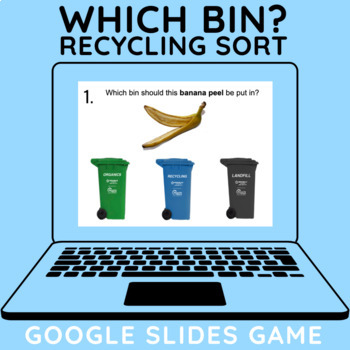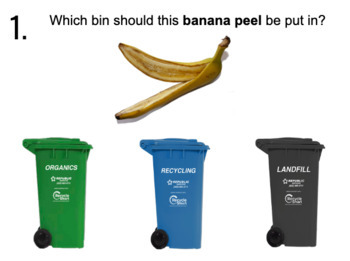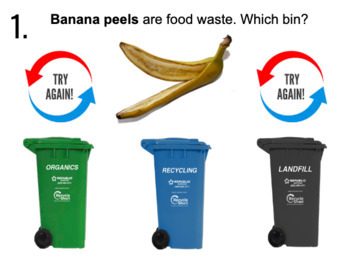Which Bin? Recycling: Google Slides Review Game
- Google Slides™

Description
Want to improve your students’ recycling skills? Practice sorting waste items with your class using this fun, interactive Google Slide activity.
This product consists of a Google Slide deck where students are shown various waste items and must select what bin to put the item in - either compost (green bin), recycling (blue bin), or trash (black bin). With the Slide Deck in presentation mode, students must select the image of the correct bin on each slide and once successful, will automatically progress to the next slide. If the incorrect bin in selected, students will be transported to a “try again” slide where they will receive additional information on the waste item and have another chance to select the correct bin. This built-in scaffolding is sure to help your students succeed! There are 15 common and/or household waste items included in this activity, such as a pizza box, a light bulb, and a to-go coffee cup.
This product can be used as a whole-class activity: for in-person class sessions, students can come up to a screen one-by-one to click on the correct bin, or during virtual class time, the teacher clicks from their computer in response to a class consensus. This activity can also be completed by students individually or in a group to practice sorting waste items and can be done synchronously or asynchronously or in a hybrid setting. Watch engagement soar as students cheer on their classmates to accurately sort waste. Your students will certainly come away from this activity with more knowledge on how to sort waste and in turn, how to help reduce waste and minimize their carbon footprint.
This ready to teach, no prep activity is a perfect add-on to any Environmental Science or general science class studying waste management, the 3Rs (Reduce-Reuse-Recycle), or pollution, and is suitable for students of many ages. It could also be used as a fun Earth Day activity.




